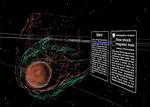Associate Professor for Signal Processing
Friedrich-Alexander-Universität Erlangen-Nürnberg
Biography
Sebastian J. Schlecht is Associate Professor for Signal Processing at the Friedrich-Alexander-Universität Erlangen-Nürnberg, Germany. This position is part of the Chair of Multimedia Communications and Signal Processing. Until 2024, he was Professor of Practice at Acoustics Lab, Aalto University, Finland. His research interests include spatial audio processing with an emphasis on artificial reverberation, synthesis, reproduction, and 6 degrees-of-freedom virtual and mixed reality applications. In particular, his research efforts have been directed toward the intersection of applied mathematics, algorithms, perception, machine learning, and sound design. Current open and ongoing student projects can be found here. I am continuously looking for students to join my research group; if you are interested, don’t hesitate to get in touch with me via email and include your topic interest and CV.
- Virtual Room Acoustics
- Physical Modeling
- Virtual & Augmented Reality
- Psychoacoustics
- Model-based Deep Learning
PhD in Acoustic Signal Processing, 2017
University of Erlangen-Nuremberg, Germany
M.Sc. in Digital Music Processing, 2011
Queen Mary, University of London, UK
M.Sc. in Applied Mathematics, 2010
University of Trier, Germany
Recent Posts
Awards
| Title | Organisation | Awarded for | Year |
|---|---|---|---|
| Best Paper at DAFx | International Conference on Digital Audio Effects in Copenhagen, Denmark | Differentiable Feedback Delay Network for Colorless Reverberation | 09/2023 |
| Aalto ELEC Radical Creativity Award | Aalto University | for carrying out several innovative and creative projects | 03/2023 |
| Award for High-quality Teaching | Aalto University | ELEC-E5690 Immersive Sound D | 09/2022 |
| 3rd Best Paper at DAFx | International Conference on Digital Audio Effects in Vienna, Austria | Physical Modeling Using Recurrent Neural Networks with Fast Convolutional Layers | 09/2022 |
| Award for High-quality Teaching | Aalto University | ELEC-E5680 Virtual Acoustics | 09/2021 |
| 3rd Best Paper at DAFx | International Conference on Digital Audio Effects in Vienna, Austria | The Role of Modal Excitation in Colorless Reverberation | 09/2021 |
| Best Paper of Journal of AES | Journal of the Audio Engineering Society | Directional Feedback Delay Network | 06/2020 |
| Best Paper at WASPAA | IEEE Workshop on Applications of Signal Processing to Audio and Acoustics, New Paltz, USA | Dense Reverberation with Delay Feedback Matrices | 10/2019 |
| 2nd Best Paper at DAFx | International Conference on Digital Audio Effects in Aveiro, Portugal | Optimized velvet-noise decorrelator | 09/2018 |
| Best Peer-Reviewed Paper at AES ARVR | 2018 AES International Conference on Audio for Virtual and Augmented Reality in Redmond, WA, USA | Audio quality evaluation in virtual reality: Multiple stimulus ranking with behavior tracking | 08/2018 |









